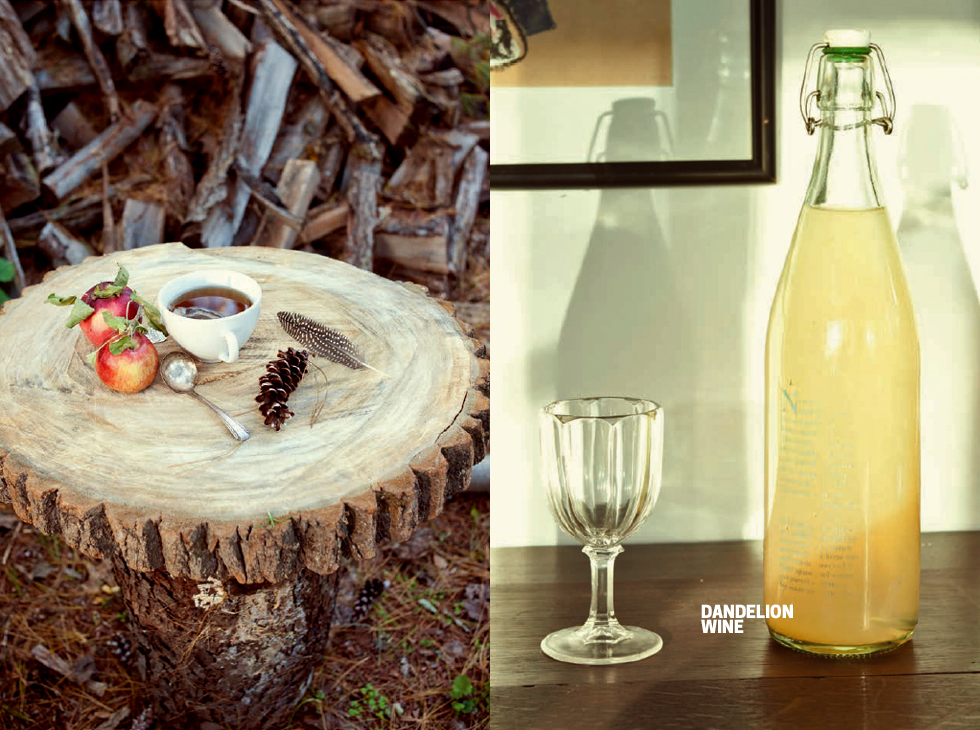It’s always good to have skills and honor nature. Modern Pioneering takes you outside in the city and rural areas and shows you how to survive in style.
Whether you’re an urban city slicker or have the great outdoors at your fingertips, Georgia Pellegrini’s Modern Pioneering will show you how to live off the grid and get connected to nature in style. In this independent spirit, you’ll learn earth-to-table dining at its best: grow your own garden even if your patch of land is only your fire escape or a windowsill; create a modern-day larder and build a self-sufficient pantry with the tried and true techniques of pickling, smoking, curing, jamming, and fermenting; and learn to live off the land by foraging, camping, and other survival techniques for both rural and urban dwellers. With recipes, hand-drawn illustrations, and guides for adventurous tasks big and small, Modern Pioneering will empower you to get your hands dirty and embrace your strong, self-sufficient side.
Enjoy a recipe from the book for making dandelion wine. We chose this recipe to include in Hobnob’s party plan with a focus on wild things and foraged ingredients. See the entire plan at this link.

•
recipe
Dandelion Wine
Dandelions bloom for only a few weeks in early spring, with a few stragglers throughout the summer. They look like bright yellow suns and have a particularly good supply of vitamins A and C, calcium, and phosphorus, some of which will remain even when you dry the flowers. Pick them from an open field far from any insecticide spraying, and if you can, pick early in the season when the leaves of the plant are still tender. Newly bloomed flowers are ideal. Dandelion wine is traditionally sipped from very small glasses. I have also combined it with seltzer water for a spritzer, or you could do as my godfather does and pour it over a roasting chicken for a caramelized skin. Some people prefer to make dandelion wine with just the petals, but I use the whole flower bud. The reason is that fermentation can sometimes get stuck before it is complete. This can happen when there aren’t enough micronutrients for the yeast. You increase the chance of success by using whole buds because they contain more micronutrients, but you will have a slightly more bitter wine.
8 CUPS whole dandelion blossoms, washed well, stems removed
juice of 1 orange
juice of 1 lemon
peel of 1 large orange, coarsely chopped
peel of 1 lemon, coarsely chopped
16 CUPS water
—
2 1/4 tsp brewer’s yeast
1/4 CUP warm water
—
6 cups sugar
8 whole cloves
1-inch piece of fresh ginger, peeled and diced
—
1. Wash the dandelion blossoms well in a colander. Place them in a large pot with the orange juice, lemon juice, the orange and lemon peels, and 16 cups of water. Bring to a boil over high heat, and allow to boil for 2 to 3 minutes. Remove from the heat and let it cool. Let it sit, covered, for 24 hours.
2. Dissolve the yeast in the 1/4 cup of warm water and let it sit for 10 minutes.
3. Add the sugar to the dandelion liquid and stir. Next, add the yeast mixture and stir to combine.
4. Fit a large jug with a funnel and set a small fine mesh strainer in the funnel. Ladle in the liquid one spoonful at a time, pressing down onto the dandelions to ensure all of the liquid is extracted. Dump the dandelions and peels into an empty bowl to allow each new batch of liquid to strain easily.
5. Add the cloves and ginger to the jug.
6. Place an airlock on the jug, so that the CO2 can leave the jug but bad yeast doesn’t enter. This can be done with a deflated balloon—poke holes into the latex, then fasten the balloon around the neck of the jug. Alternatively, you could use plastic wrap. The airlock is used instead of the lid; if you screw the lid on tightly, you run the risk of having the bottle explode. Shake well and let it rest for 1 week in a cool, dark place as the fermentation begins.
7. Using a funnel and fine-mesh strainer, strain the liquid into bottles. Add an airlock over each of the bottles and allow the uncorked bottles to sit in a dark, cool place for 3 to 6 weeks. Then cork the bottles, or use bottles with screw-on tops, and store them in a cool, dark place for at least 2 months and up to a year. This kind of wine is best consumed while it is young, about 6 months after you cork it.
Reprinted with permission from Modern Pioneering by Georgia Pellegrini (Clarkson Potter, 2014).
We've got more recipes featuring foraged, wild, and exotic ingredients in the 14 Exotic & Foraged


